
The Anand MarriageAct has been discussed a few times on The Langar Hall. Years ago, I thought of the passage of the new act in Pakistan was one of the year’s greatest ‘successes’ by the community. In this year of 2009, the Sikh Research Institute plans to observe the ‘centennial’ of the Anand Marriage Act of 1909 in a big way.
Releasing a publication that can be viewed here and accompanied by the following the video with Harinder Singh, the PR campaign seeks to put limelight on the issue of Sikhs falling under the category of “Hindu” in the Indian Constitution. In fact it is emphatically stated in the publication.
Our hope in featuring this date in legislative history is to inspire Sikhs to demand acknowledgement as a distinct community, especially with regards to legal reforms.

While I believe the attempt is praiseworthy, an uncritical celebration of the colonist’s bill is also naïve and highly problematic.
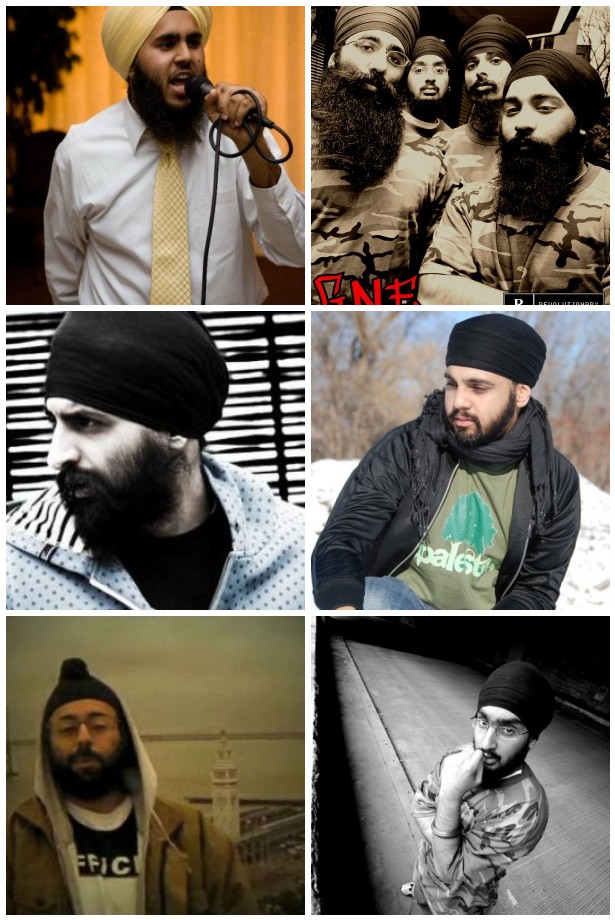 While everyone seems to be pretty excited about Kamaljit topping the Billboard charts – it seems that Jay Sean is not the only musician from our community who is gaining a ton of attention lately. In the October/November 2009 issue of East West magazine, an article by Navdeep Singh Dhillon titled, “The Brown Underground” discusses the five new names in hip-hop worth knowing. While on TLH we have featured these names in previous posts and are fans of their work – we wanted to highlight this new article as it provides a very intimate look at these artists. Musicians, rappers, emcees or whatever you may call them – they, at the end of the day, are regular guys (believe me, they are). They work, they go to school, they feel strongly about adversities that are going on all over the world. Unlike many, however, they are using their talent to channel that emotion into creativity and into their music. We definitely like what we’re hearing and whether they know it or not, these artists are paving a path for generations to come.
While everyone seems to be pretty excited about Kamaljit topping the Billboard charts – it seems that Jay Sean is not the only musician from our community who is gaining a ton of attention lately. In the October/November 2009 issue of East West magazine, an article by Navdeep Singh Dhillon titled, “The Brown Underground” discusses the five new names in hip-hop worth knowing. While on TLH we have featured these names in previous posts and are fans of their work – we wanted to highlight this new article as it provides a very intimate look at these artists. Musicians, rappers, emcees or whatever you may call them – they, at the end of the day, are regular guys (believe me, they are). They work, they go to school, they feel strongly about adversities that are going on all over the world. Unlike many, however, they are using their talent to channel that emotion into creativity and into their music. We definitely like what we’re hearing and whether they know it or not, these artists are paving a path for generations to come.
The article highlights the work of Canadian-based Humble the Poet and Sikh Knowledge, D.C.-based Saint Soulja of G.N.E., Hoodini from Los Angeles and Mandeep Sethi from San Francisco. You can read about their quest into this industry and how being a Sikh plays a role (or does not) in their music. What’s clear about these artists is that while they are Sikh, they don’t necessarily only rap about Sikh issues or only about issues affecting our community and that’s what makes them stand out in my mind. Injustice to any group is an injustice to humanity and as Sikhs, that is something we should resist. We can rest assured that these artists are having that dialogue.
Gurmeal Singh, the British Sikh police officer who was humiliated for practicing Sikhi, will be compensated for “indirect harassment” and humiliation. Judge Murray Creevy ruled that the Greater Manchester Police (GMP) viola ted his dignity.
ted his dignity.
The BBC reports that the Assistant Chief Officer at GMP, Julia Rogers felt that they had always acted in the best interest of Singh. However, GMP accepts the ruling and has already updated their policies.
After a heated conversation with his Sergeant about his inability to remove his turban while on the job, Singh feared that he would be made to look like a comic character on television by wearing a modified turban.
Ultimately the ruling according to Singh’s lawyer:
“… leaves him in difficulty in relation to his future career but will hopefully open the eyes of Greater Manchester Police. He joined the police because of his values as a Sikh. What is important now is what Greater Manchester Police will do to help him come back.”
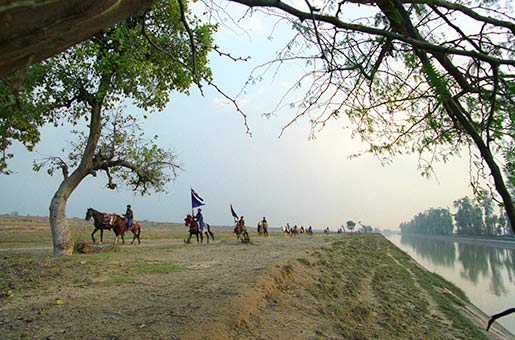 Environmental issues have taken a backseat for way too long. Even under this administration – which promised to create jobs through new and clean energy initiatives, and rejoin the international community to reduce worldwide carbon emissions – environmental issues have taken a backseat to health care overhaul and reviving our frail economy.
Environmental issues have taken a backseat for way too long. Even under this administration – which promised to create jobs through new and clean energy initiatives, and rejoin the international community to reduce worldwide carbon emissions – environmental issues have taken a backseat to health care overhaul and reviving our frail economy.
Crisis
We should be especially concerned because the consequences of misusing resources are all too clear in the near-crisis state that Punjab’s ecology is currently in. Those who still have relatives in Punjab know that this past summer, electricity outages were a daily occurrence and lasted 8 hours at a time – the worst in many years. These shortages in electricity occur because the government subsidizes electricity for farmers so that it’s free or nearly so and they can pump water for irrigation to their heart’s content. However, this leads to electricity shortages, overuse of waterpumps, and water wastage. [Forbes-India]
An article in Forbes-India asked yesterday, “Is India running out of water?” For Punjab, the answer is yes.
And Punjab, as the breadbasket of the most populous nation in the world, may be an indicator of other similarly situated agricultural communities.
Blogged by: Amritpan
 The presence of the Sri Guru Granth Sahib and its message of universal fraternity of the human race and ultimate destination of oneness with the Supreme Being imparts an unparalleled serenity and contentment on its disciple. When I listen to the chants of Om-mantar in a Mandir, hear Hamza Yusuf deliver the Friday Kutbah in a nearby Masjid, witness a Jewish Hallel or meditating Buddhist in a park … I see each as another form of reverence to the Almighty, but every single of theses experiences leave me searching for more…
The presence of the Sri Guru Granth Sahib and its message of universal fraternity of the human race and ultimate destination of oneness with the Supreme Being imparts an unparalleled serenity and contentment on its disciple. When I listen to the chants of Om-mantar in a Mandir, hear Hamza Yusuf deliver the Friday Kutbah in a nearby Masjid, witness a Jewish Hallel or meditating Buddhist in a park … I see each as another form of reverence to the Almighty, but every single of theses experiences leave me searching for more…
A few days ago I was invited by a Muslim friend to join her community in a fundraising Fast-A-Thon for Ramadan… (participants fast for a day and a local business donates a certain amount of money per fast-er to a charity or Masjid). I acquiesced and signed up, happy to help with their efforts for daan, or as they call it, zakat.
 A couple of months ago the Sikh community was elated to see the Queen of England make two Sikh gentlemen her bodyguards. Thisact was seen as a huge step forward for Sikhs in the fight against discrimination for our religious articles of faith. It tremendously inspired many of us to continue the fight against Sikhs in the US Army and other places in the United States and Europe. It reflected what generations of hard Sikh work against discrimination for our religious articles of faith had done in the UK.
A couple of months ago the Sikh community was elated to see the Queen of England make two Sikh gentlemen her bodyguards. Thisact was seen as a huge step forward for Sikhs in the fight against discrimination for our religious articles of faith. It tremendously inspired many of us to continue the fight against Sikhs in the US Army and other places in the United States and Europe. It reflected what generations of hard Sikh work against discrimination for our religious articles of faith had done in the UK.
However, a recent case of a Sikh police officer in the UK feeling humiliated and offended for refusing to remove his turban as part of the Greater Manchester Police has shown us that as we take great steps forward we are still far away from taking a great leap against discrimination.
Gurmeal Singh, who is based in Wythenshawe Police station, near Manchester, said that he was coerced into walking into a petrol fire and told to wear a modified turban by colleagues. Despite telling police trainers that he had applied a flammable gel to his beard and refused to look like a character on a British comedy show, the officers told him- “this is what you signed up for”.
Singh said,
“My turban is not an article of clothing like a shirt or tie – it is part of me, a part of my religion and I feel as though my religion and I have become an issue for GMP.
“It has made me feel alienated. I was deeply offended and humiliated.”
The British Sikh Police Association are supporting Singh in his legal action. The hearing in his case continues.
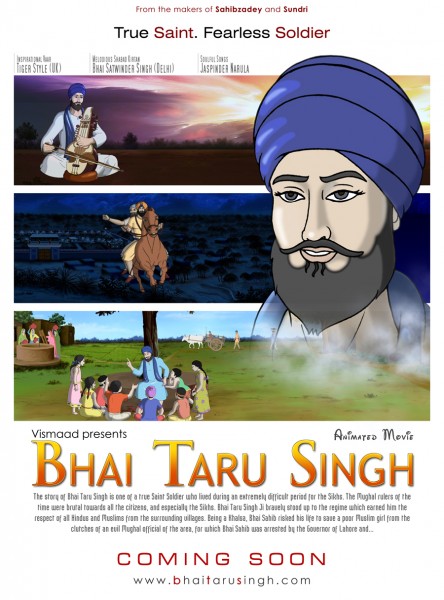 babania kehania put saput karaen ||
babania kehania put saput karaen ||
The stories of one’s ancestors make the children good children.
(Guru Amar Das, Raag Raamkalee, Page 951 of Guru Granth Sahib)
The American writer Muriel Rukeyser once said that the universe is made up, not of atoms, but of stories. This especially holds true for the Sikh universe. Stories or anecdotes from our short but action-packed history provide us with guidance, inspiration and resilience. Who needs fictional super-heroes when the Sikh narrative provides us with so many real-life heroes who did extraordinary things?
For most Sikhs, myself included, these Sikh stories told to us by our parents and grandparents were an essential part of growing up Sikh. However, we’re quickly losing this great oral tradition. For a variety of reasons, parents and grandparents aren’t telling sakhis like they used to and kids aren’t listening to them.
(more…)
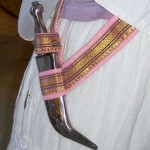 The California legislator has unanimously passed a Kirpan Education Bill (AB 504) through both houses (Assembly & Senate); it is now headed to Governor Schwarzenegger’s desk. This bill, carried by Assemblymember Warren Furutani (D-Long Beach) and other co-sponsors, will only become law if the California Governator signs off on it. AB 504 is a historic bill because it is the only piece of legislation in America that focuses on Sikhs and our kirpan. Furthermore, the bill is being pushed through the law-making process in California-a state with the oldest and largest number of Sikhs in America.
The California legislator has unanimously passed a Kirpan Education Bill (AB 504) through both houses (Assembly & Senate); it is now headed to Governor Schwarzenegger’s desk. This bill, carried by Assemblymember Warren Furutani (D-Long Beach) and other co-sponsors, will only become law if the California Governator signs off on it. AB 504 is a historic bill because it is the only piece of legislation in America that focuses on Sikhs and our kirpan. Furthermore, the bill is being pushed through the law-making process in California-a state with the oldest and largest number of Sikhs in America.
The Kirpan Education Bill (AB 504) requires that all California law enforcement officers be trained on Sikhs and our kirpan. This training would teach California law enforcement officers about Sikhs and the importance of our religiously mandated articles of faith. Sikhs wearing a kirpan are often disrespectfully approached by law enforcement officers and arrested for concealed weapons charges. Often law enforcement officers will pull Sikhs over for minor traffic violations or safety concerns and as soon as officers see the kirpan the situation is escalated into a criminal offense; although the Sikh was only practicing his/her faith. These officers are unaware that the kirpan is a religious mandated article of faith-a gift from our Guru that we wear with care, respect, and love.
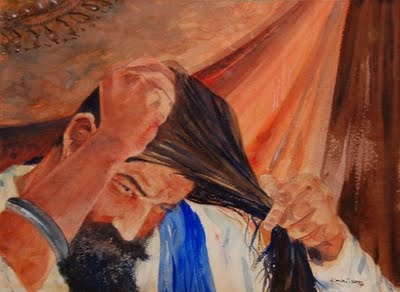 A few weeks ago, while at the park with my family, an elderly woman dressed in a sari came over to say hello. After a brief introduction, she said to us “wait here for a second” and called out “Alex…come here!” A little boy with light skin and brown hair ran over to us. The lady in the sari bent down and said to Alex, “See…this is what your grandfather looked like. He wore a turban and had a long beard just like him.” Alex wasn’t quite sure what to make of it, but he forced a quick smile and ran back to the swings.
A few weeks ago, while at the park with my family, an elderly woman dressed in a sari came over to say hello. After a brief introduction, she said to us “wait here for a second” and called out “Alex…come here!” A little boy with light skin and brown hair ran over to us. The lady in the sari bent down and said to Alex, “See…this is what your grandfather looked like. He wore a turban and had a long beard just like him.” Alex wasn’t quite sure what to make of it, but he forced a quick smile and ran back to the swings.
As a dastaar-wearing Sikh, I come across these interactions quite often – some pleasant, some not-so-pleasant, and some downright awkward. But because they happen so often, I tend to brush it off and forget all about them quickly. For some reason, this incident stuck with me.
It made me think about the days in Gurmat camp decades ago when the Uncles would scare us in to keeping our kesh or else keshdari Sikhs would become a “thing of the past” and “only be seen in museum exhibits.” I never bought that theory, but the incident in the park did shake me a bit.
Although Sikhi is such a large part of my life, truth is…I really don’t think about kesh much. As a matter of fact, when I lead presentations about Sikhi to Sikhs or non-Sikhs, I make a point to downplay the kesh aspect. Not that it is any less important than any of the other kakaars, but with non-Sikhs, the “mystery” behind the kesh seems to overtake discussions, and we miss some of the most important and central tenets of the faith…equality, self-less service, self-realization, and universality of the message. And even with Sikhs, kesh is made such a focus that many in our community feel that as long as we retain the external image of a Sikh, the rest of maryada and discipline does not apply. It is essentially a “free-pass” and gives us the right to criticize those who do not keep their kesh.
It might partly be the scarcity of female voices and public female faces in the Sikh community that makes Nikky-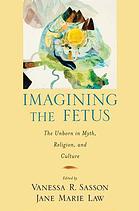 Guninder Kaur Singh’s so distinctive and refreshing. But in addition to her position as one of the few public female voices in the Sikh community, her original and creative work is really what makes Ms. Kaur-Singh so refreshing. As we have discussed in the past, in the context of “Relocating Gender in Sikh History,” the vast majority of Sikh history has been written by men. And thus, despite their best intentions, for the most part, women’s voice in Sikh history has been non-existent. It is silent.
Guninder Kaur Singh’s so distinctive and refreshing. But in addition to her position as one of the few public female voices in the Sikh community, her original and creative work is really what makes Ms. Kaur-Singh so refreshing. As we have discussed in the past, in the context of “Relocating Gender in Sikh History,” the vast majority of Sikh history has been written by men. And thus, despite their best intentions, for the most part, women’s voice in Sikh history has been non-existent. It is silent.
In this realm of mostly male voices, Ms. Kaur-Singh has taken an original position on a much-needed project: to explore a feminist perspective in interpreting Gurbani. Many translations of Gurbani have been written, some of which are quite good, and others that are quite lacking (in terms of staying close to the feeling of the original shabad and being easily understandable for today’s audiences). One of the most popular translations today, if not the most popular, is Sikhi to the Max. It’s heavily used in gurdwaras, at weddings, and by individuals at home. And in this translation, the divine is interpreted as He/Him/Lord. Not only is this archaic, it creates a framework of masculinity that limits our understanding of Waheguru. The Sikh conception of gender embraces as well as goes beyond gender.
In a piece we discovered recently, Ms. Kaur-Singh contrasts current practices of sex-selective abortion with the place of the feminine within Gurbani. In a chapter of “Imagining the Fetus: The Unborn in Myth, Religion, and Culture,” Ms. Kaur Singh orients readers with the history of sex-selection in Punjab. She then goes on to show how Gurbani holds the power to turn today’s practices on their head. In a few short pages, we are treated to a celebration of the feminine, reminded that our spirituality can focus on our source (the physical allegory of which is the mother) rather than its current infatuation with the end, and given a gender-neutral interpretation of excerpts of Gurbani which resonate as closer to a truer meaning than some other more widely used interpretations today.
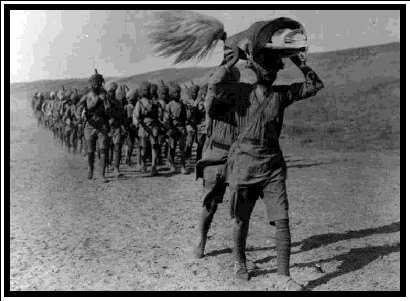 In honor of yesterday’s Gurpurab (Bhadon 17, Nanakshahi) marking the anniversary of the first installation of Guru Granth Sahib Ji Maharaj in the Darbar Sahib, I’d like to share a piece I had written for sikhchic.com at the culmination of last year’s “300 Saal” celebrations, titled “My Guru & I: In His Presence.”
In honor of yesterday’s Gurpurab (Bhadon 17, Nanakshahi) marking the anniversary of the first installation of Guru Granth Sahib Ji Maharaj in the Darbar Sahib, I’d like to share a piece I had written for sikhchic.com at the culmination of last year’s “300 Saal” celebrations, titled “My Guru & I: In His Presence.”
As 2008 comes to an end, I’ve been reflecting on all the “300 Saal” celebrations of the year. It was an inspiring year – and the discussion, speeches and sheer emotion of this milestone really gave me a chance to reflect on the role of the Guru in my life.
While volunteering at Gurmat camps, I always made a point to pose a question to the children, prior to leading them in to their first divan: “If you walked into this Gurdwara and instead of the Guru Granth Sahib being there, say it was Guru Nanak, or Guru Amar Das or Gur Tegh Bahadur, sitting there – how would you act?” How would you carry yourself when walking in? Would your mind-set be any different? Would your muthha tek take on a different meaning? Would you be more attentive and alert during the divan? Would you be more eager to listen to his words and try harder to understand him?
Guru Ram Das says:
Baani Guru Guru Hai Baani Vich Baani Amrit Saarey
Bani is the Guru and Guru is the Bani. And it’s within this Bani, that Amrit is found.
Thus, the Shabad (“The Word”) is, was and always will be the Guru. History tells us that even during Guru Arjan’s time, the Granth (then referred to as the Pothi Sahib because it was yet to be completed and anointed Guru), was the center of the congregation, the center of the Darbar, even in the presence of Guru Arjan himself.
The saakhis tell us that Guru Arjan had so much reverence for the Pothi Sahib that he kept it on an pedestal elevated even from himself, and joined the Sikhs in paying obeisance to it. This tells me that it is not the person, the attire or the physical attributes that make the Guru; instead, it is the Shabad. But we call the ten physical forms (from Nanak to Gobind Singh) Guru because they were the living manifestation of that Shabad.
They lived the Shabad. We sing it, they lived it.
I found this video of the Miss World Punjaban 2008 contest interesting because the contestant chose to highlight her Sikh identity that is intimately linked to Punjabi culture. I find that it is easy for us to “intellectually” talk about the separation of the two identities. However, for many, being Sikh and Punjabi are intimately connected. They mutually exist-one does not envision oneself without the other.
Ms. Gurpreet Kaur Khaira from Canada chose to highlight this co-existence of the two identities in the talent portion of the contest. She performs dhadi vaar, while wearing a simple white suit and kessari chunni.
Who is Miss Punjaban and what does she look like varies … there is not only one notion of Punjabi “beauty” or identity … at least in this beauty contest! You can sing dhadhi vaar in simplicity or a Punjabi song in a bright red chunni and kokaa.
(FAST-FORWARD TO 1:44 to see Ms. Gurpreet Kaur Khaira from Canada)

While randomly browsing on the web, I came across this interesting anecdote by a Christian of Amritsar.
 The issue of the loss of Sikh heritage sites and documents has long been lamented by many Sikhs. In fact, one of my fellow langa(w)riters blogged about the need to ‘preserve what history we have left.’ One group has been silently seeking to remedy this problem – the Nanakshahi Trust.
The issue of the loss of Sikh heritage sites and documents has long been lamented by many Sikhs. In fact, one of my fellow langa(w)riters blogged about the need to ‘preserve what history we have left.’ One group has been silently seeking to remedy this problem – the Nanakshahi Trust.
Quietly working on a massive project for over the past 6 years, the Nanakshahi Trust, along with the Sikh Research Institute, have inaugurated the Panjabi Digital Library:
For the first time ever a searchable collection of millions of rare pages on the Sikhs and the region of Panjab has been made available. Panjab Digital Library (PDL) will include texts of manuscripts, books, magazines, newspapers and photographs and will be available to anyone with Internet access at www.PanjabDigiLib.org. This launch was made possible in part by The Nanakshahi Trust and the Sikh Research Institute (SikhRI).
In today’s society, digitization is the key to immortality. While Sikhs have to be equally wary of those that claim Sikhs have no history as well as those that come up with their own ludicrous interpretations, a project such as the Panjab Digital Library allows Sikhs to access their own primary and secondary sources. Nanakshahi Trust has done a tremendous boon to Sikhs, researchers, and all that are interested in the preservation of history and man (and woman’s) historical past.
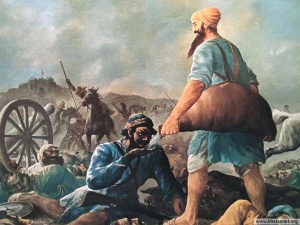 I’ve always enjoyed a good story…and amongst all the depressing news lately of our declining economy, raucous town hall meetings, and corrupt politicians…I often turn to StoryCorp’s podcasts for a quick “pick-me-up”. A few months back, I came across a beautiful piece titled “Finding El Dorado.” It’s the story of Gus Hernandez and the unique friendship he developed with Siddiqi Hansoti as a result of the current economic crisis. I was moved by this simple story of compassion and the power of the human spirit. Take a listen…it’s only 3 minutes [link].
I’ve always enjoyed a good story…and amongst all the depressing news lately of our declining economy, raucous town hall meetings, and corrupt politicians…I often turn to StoryCorp’s podcasts for a quick “pick-me-up”. A few months back, I came across a beautiful piece titled “Finding El Dorado.” It’s the story of Gus Hernandez and the unique friendship he developed with Siddiqi Hansoti as a result of the current economic crisis. I was moved by this simple story of compassion and the power of the human spirit. Take a listen…it’s only 3 minutes [link].
This story got me thinking about compassion and what it means to a Sikh. After some brief research, I found dozens of references to Daya (and its variations – Dayal, Dayala etc.) in the Sri Guru Granth Sahib Ji. Depending on the context, it is loosely translated as compassion, mercy or pity. Several times it is used as an attribute of Waheguru:
miharavaan kirapaal dhaeiaalaa sagalae thripath aghaaeae jeeo |3|
He is Merciful, Kind and Compassionate. All are satisfied and fulfilled through Him. ||3||
Other times it is used in the context of an Ardaas:
jath sath chaaval dhaeiaa kanak kar praapath paathee dhaan |
Please bless me with the rice of truth and self-restraint, the wheat of compassion, and the leaf of meditation.
But what I connected with the most was how compassion was described as a necessary attribute of the GurSikh:
dhaeiaa kapaah santhokh sooth jath gantee sath vatt |
Make compassion the cotton, contentment the thread, modesty the knot and truth the twist.
eaehu janaeoo jeea kaa hee th paaddae ghath |
This is the sacred thread of the soul; if you have it, then go ahead and put it on me.
Blogged by: sikhpulse
The Christian community is confronting the development of the “Sixth American:” those individuals who do not exist in or identify with any particular space and ultimately congregate together. These integrated congregations are hopeful signs that the elements of discrimination and racism which infiltrated most churches over the last two centuries are slowly being eradicated.
Strangely enough, Sikh-Americans aren’t evolving in the same direction. In less than fifty years, Sikh-Americans have (get this) provided an anti-model for our adopted culture by dividing into self-identifying congregations, sects and denominations!
This may in part be explained by our natural connection to our social networks. Like members of other faiths, we choose to go to a place of worship that is attended by our families. We go where our friends attend. We go where our language is spoken. We are segregated by whether we are brand-spankin-new-citizens or third-generation Sikh Americans. We are separated by our interests and our jobs.
 Gatka is becoming popular amongst Sikhs and non-Sikhs in the West. Raveena writes that this resurgence in the Toronto area is primarily because of The Annual International Yudh Gatka Tournament that originated in Toronto in 2003. This year the tournament is being held in New Jersey. The Toronto leg of the tournament will on August 23rd the Rexdale Gurdwara Sahib. You can find out more information at Yudh.net.
Gatka is becoming popular amongst Sikhs and non-Sikhs in the West. Raveena writes that this resurgence in the Toronto area is primarily because of The Annual International Yudh Gatka Tournament that originated in Toronto in 2003. This year the tournament is being held in New Jersey. The Toronto leg of the tournament will on August 23rd the Rexdale Gurdwara Sahib. You can find out more information at Yudh.net.
Why is Gatka becoming so popular? Yudh.net writes that, “Not only does Gatka emphasize the physical training of martial arts, but it puts a special focus on ‘mental’ training which is needed to be successful in any sport”. Thus, this traditional Sikh martial arts from the early 17th century is a place to relieve stress, heighten awareness, but also learn sportsmanship and respect-for both people and weapons.
For those of you who attend the Tournament, please let us know how it goes.
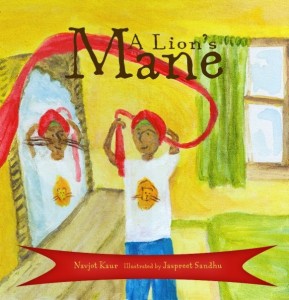 African American publishing houses were born out of a need – the need to fill a void in the industry. Bookshelves needed to share stories of their struggles and to give children a stake in their evolving identities. In turn, they gave rise to a new generation of diverse voices, with Asian-Pacific and Latino publishers following suit. They all have the same goal – to represent stories of their respective communities and give readers some authenticity and a sense of belonging. Now, consider this, how often did the covers of the books you read as a child have children who looked like you? Did these children’s books offer you a sense of belonging or importance? As our children enter into such a global community, it is clear that having access to authentic literature representing their heritage can only help ease the numerous challenges of peer pressure and to elevate self-esteem. Literature is perhaps the strongest avenue to enable us to realize our commonalities while teaching us about the idiosyncratic nature of one another.
African American publishing houses were born out of a need – the need to fill a void in the industry. Bookshelves needed to share stories of their struggles and to give children a stake in their evolving identities. In turn, they gave rise to a new generation of diverse voices, with Asian-Pacific and Latino publishers following suit. They all have the same goal – to represent stories of their respective communities and give readers some authenticity and a sense of belonging. Now, consider this, how often did the covers of the books you read as a child have children who looked like you? Did these children’s books offer you a sense of belonging or importance? As our children enter into such a global community, it is clear that having access to authentic literature representing their heritage can only help ease the numerous challenges of peer pressure and to elevate self-esteem. Literature is perhaps the strongest avenue to enable us to realize our commonalities while teaching us about the idiosyncratic nature of one another.
This is why we are so excited to bring you news about a new children’s book that promises to be “a staple on the shelves of young visionaries.” A Lion’s Mane, being released this month, is written by Navjot Kaur and illustrated by Jaspreet Sandhu. The book is published by Saffron Press, an independent publisher, aiming to encourage children to deepen their understanding of positive self-identity.
In this beautifully illustrated story, young readers journey to cultures around the world to explore the meaning of the dastaar, or turban of the Sikhs. Allusive words placed within a vibrant red dastaar help promote our connections as global citizens and encourage dialogue around issues of identity and kinship. [link]
This book certainly moves beyond the traditional in several ways. A Lion’s Mane brings a global perspective to the often misidentified image of the Sikh turban. It is printed on 100% recycled paper as well as displaying an Eco-Libris badge – 625 trees were planted for the first edition! In addition, a portion of proceeds from the sale of each book will support Seva Canada’s work to restore sight and prevent blindness in children. By shopping at Saffron Press, you really will be contributing to a green and ethical experience! We spoke with the author, Navjot Kaur, about the book and the challenges she underwent to have this story published. After the jump is the book trailer and the author’s first interview. As you view the information, consider this – how important is diverse and multicultural literature on the shelves of every library and school? Did you or do your children have access to this type of literature?
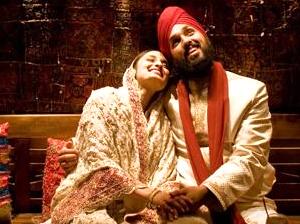 Since I exist in the age bracket where many of my friends are married or getting married, I am aptly aware of the concerns couples have about adjusting to one another after marriage. For example, how will living habits change? How will your husband/wife fit into your family? It’s a pretty daunting concept – especially for individuals who wait to get married later on in life, after years of education and commitment to careers, and along with this, years of being single. I’ve known many couples over the years who have had a difficult time adjusting to being part of a union. How can we blame them? Our community offers very little as far as pre-marital counseling for Sikh couples. In fact, a quick google search for “Sikh Marriage Counseling” doesn’t bring up anything pertinent.
Since I exist in the age bracket where many of my friends are married or getting married, I am aptly aware of the concerns couples have about adjusting to one another after marriage. For example, how will living habits change? How will your husband/wife fit into your family? It’s a pretty daunting concept – especially for individuals who wait to get married later on in life, after years of education and commitment to careers, and along with this, years of being single. I’ve known many couples over the years who have had a difficult time adjusting to being part of a union. How can we blame them? Our community offers very little as far as pre-marital counseling for Sikh couples. In fact, a quick google search for “Sikh Marriage Counseling” doesn’t bring up anything pertinent.
For many, it is also very important to know that your partner is on a similar spiritual path. This may be one of the most important elements to think about prior to marriage – as it impacts your day to day living and the way you may raise your children in the future. Some religions actually require couples to go through marriage counseling prior to marriage. We don’t seem to have this in our community but it’s not a bad idea. How many couples do you know who have gone to the Giani at their local gurdwara to elicit marriage advice? If any, i’m sure the number is small. Nevertheless, i feel this is integral to the success of marriage as there are certain questions which should be discussed before marriage.
What I did come across, however, are the following two tools. First, the Sikh Research Institute organizes the Grihast Retreat which,
is a 2-day event for young couples to strengthen marriage and family relationships by offering deeper communication between wife and husband. Grihast incorporates diverse themes that are at the foundation of a married life. New perspectives provide insights on building meaningful relationships while workshops and discussions offer a glimpse of the Gur?’s vision and ideals on marriage.
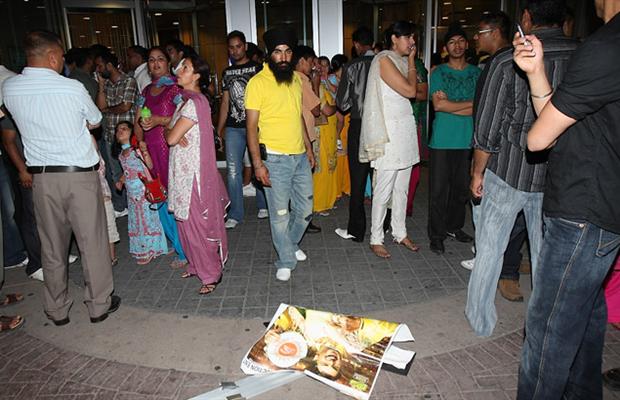 For diasporic Sikhs, it seems routine and almost expected to wake up to news about an incident where a Sikh was banned access to an event because of his or her kirpan. Many times, we blame this on the ignorance of law enforcement, who often have never heard of a kirpan. We tell ourselves, “Don’t worry, we just have to teach them and they’ll understand.” However, when Kirpan wearing patrons at a Gurdas Mann concert are barred entry, then we must stop for pause.
For diasporic Sikhs, it seems routine and almost expected to wake up to news about an incident where a Sikh was banned access to an event because of his or her kirpan. Many times, we blame this on the ignorance of law enforcement, who often have never heard of a kirpan. We tell ourselves, “Don’t worry, we just have to teach them and they’ll understand.” However, when Kirpan wearing patrons at a Gurdas Mann concert are barred entry, then we must stop for pause.
When a kirpan wearing citizen is blocked access from exercising their civil liberties, we as a community go into uproar mode. We file lawsuits, organize protests, and launch mass public marketing campaigns in order to exercise what we believe to an unalienable right and an articulation of our personal sovereignty. When a Bollywood movie comes out with a Sikh hero sans beard, our institutional bodies outrun and out-leap each other to be the first to cry foul. When a Baba in a Dera dresses up as Guru Gobind Singh Ji, we bring the state of Punjab to a halt.
However, at the point where cultural icon and repository Gurdas Mann, goes so far as to write “No Kirpans or Sharp Objects Allowed” on tickets being sold at a VAISAKHI show in England, then what do we do? We let him carry forward and WE outrun and out-leap each other so we can be first in line at his next concert.
Now when his concert bans an entity which is legally allowed in the public spaces of Canada, then what do we do? Do we ignore and slowly sweep this incident under the rug, like so many of our cultural problems? Or, do we stop and say, Hey, standing next to K.P.S Gill and lambasting “Sikh terrorism” is not ok; banning kirpans in UK is not appreciated; and throwing out concertgoers in Alberta, is simply no longer going to work.
